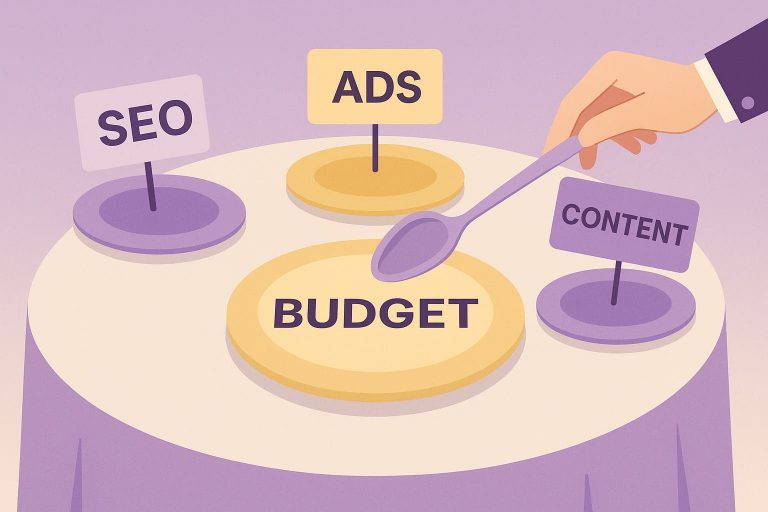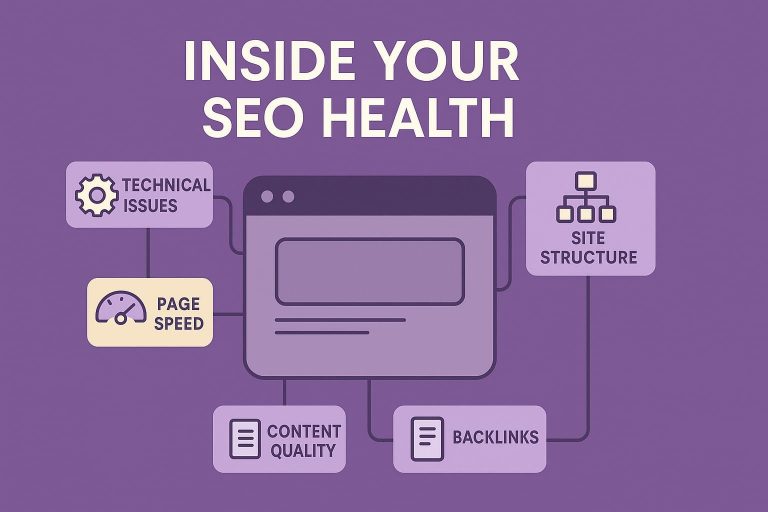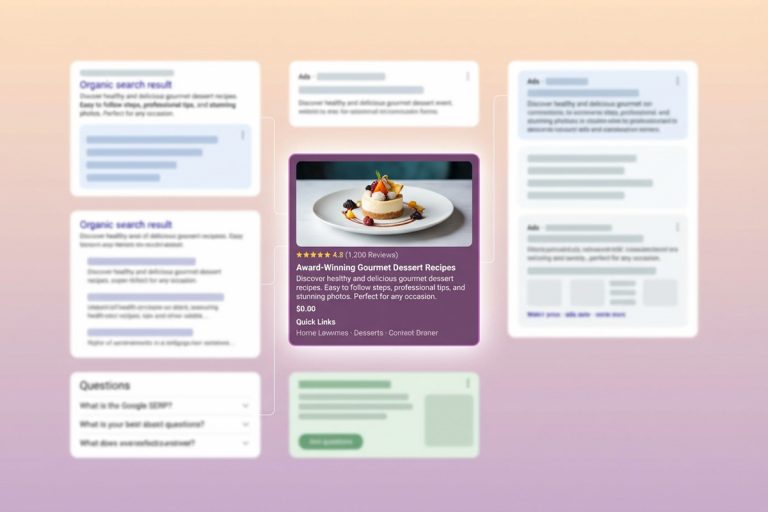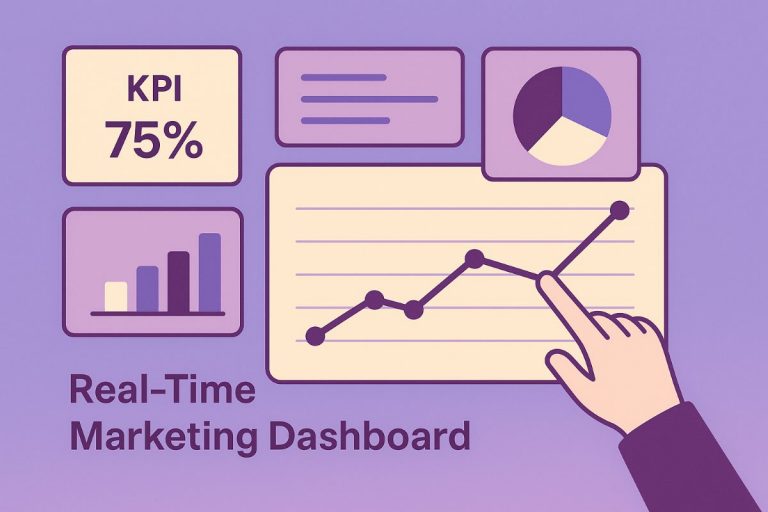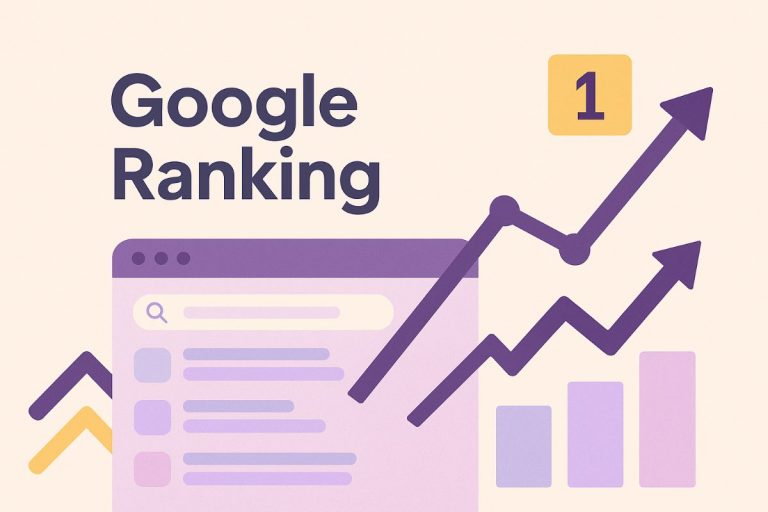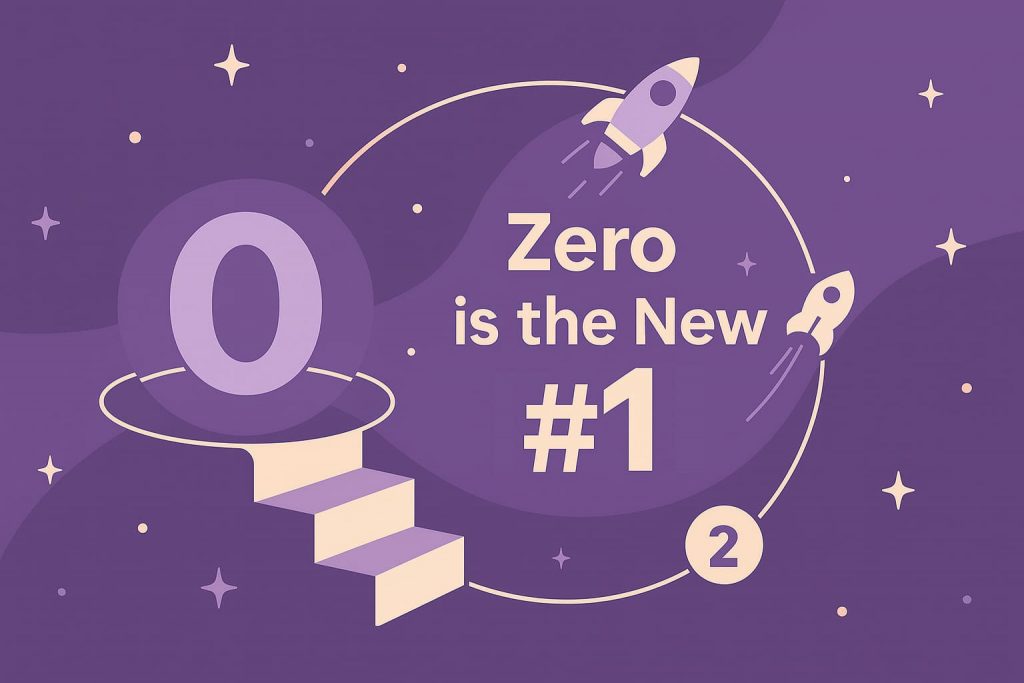
- Key Takeaways
- What is a Google Answer Box?
- Why Google Created Answer Boxes
- Types of Google Answer Boxes
- Important Google Answer Box Updates
- Why Google Answer Boxes Matter for Your Business
- How to Optimize Your Content for Google Answer Boxes
- Keyword Research for Answer Box Opportunities
- Content Structuring Techniques
- Technical SEO Considerations
- Provide Concise Answers
- Create High-Quality, Long-Form Content
- Google Answer Box Strategy for Different Industries
- How to Check Your Google Answer Box Rankings
- How to Get Into Answer Box When Competition is Fierce
- Can I Advertise in the Google Answer Box?
- Common Mistakes to Avoid
- The Future of Google Answer Boxes
- Conclusion: Your Google Answer Box Action Plan
- FAQs
Imagine capturing 42.9% CTR simply because your content ranks in Google’s Featured Snippet (Answer Box) — above the #1 organic result. This coveted “Position Zero” can double or even triple your site’s visibility and has become a cornerstone of any Search Engine Optimization (SEO) in 2025.
In this comprehensive guide, you’ll learn how to master the Google Answer Box — also known as the Featured Snippet or Position Zero — and use it to dominate the SERP. You’ll discover the snippet types, proven optimization techniques, technical foundations, and real-world examples that will help you secure and maintain this prime placement.
Key Takeaways
- Visibility & authority: Securing a Google Answer Box boosts brand recognition and establishes topical authority.
- Higher CTR: Featured snippets dramatically outperform standard top rankings in click-through rates.
- Content structure matters: Concise answers (30–50 words), lists, tables, and well-formatted headings drive eligibility.
- Technical excellence: Clean HTML, schema.org markup, mobile-first performance, and Core Web Vitals are essential foundations.
- Ongoing optimization: Monitoring competitors, updating data, and aligning with evolving queries are keys to maintaining Position Zero.
What is a Google Answer Box?
Ever typed a question into Google and found the answer at the very top — no clicks needed? That’s the Google Answer Box, or Featured Snippet, also called Position Zero. It’s a highlighted part of the Google Search Results that delivers concise answers pulled from a webpage, streamlining information retrieval.
The feature gained visibility around 2014, during Google’s expansion of the Knowledge Graph. As natural language processing and AI advanced, Answer Boxes evolved. Today, success is about intent, clarity, and structured delivery.
Key Characteristics:
- Appear at the top of Google Search Results (“Position Zero”).
- Provide direct answers pulled from third-party sites.
- Display in formats like paragraphs, lists, tables, or videos.
- Highlight the source URL for authority and clicks.
- Triggered by informational queries.
Why Google Created Answer Boxes
The Google Answer Box grew from Google’s shift toward an answer engine. Instead of long lists of links, Google placed answers upfront to improve user experience, reflect semantic search, and match evolving query intent.
Updates like Google Hummingbird (2013) and BERT (2019) powered the Knowledge Graph with AI. Smart SEO teams quickly steered clients toward clear, structured content. The story of Google Answer Box development shows optimization maturing into delivering the best possible answer.
Types of Google Answer Boxes
Google matches formats to query intent. Key types of answer boxes:
- Paragraph Snippet: For definitions like “What is compound interest?”.
- List Snippet: For step-by-step queries like “how to change a flat tire.”
- Table Snippet: For comparisons and stats like “NBA playoff standings.”
- Video Answer Box: For how-to queries like “how to tie a bow tie.”
A note on Direct Answers: Sometimes Google provides a quick fact straight from its Knowledge Graph or internal data — like a population figure or a unit conversion. Unlike Featured Snippets, these Direct Answers usually don’t link to another site; they exist simply to give the user the result instantly.
Which are easiest to target? Paragraph snippets typically require the least formatting, while list snippets are a close second if your content naturally organizes steps. Tables and video snippets are powerful but demand structured data or multimedia.
Table: Answer Box Types
| Type | Typical Triggers | Key Point |
|---|---|---|
| Paragraph | Definitions, “what is” | Easiest to target |
| List | “How to”, steps | Ideal for processes |
| Table | Comparisons, stats | Strong for data-heavy |
| Video | Tutorials, DIY | Engaging, multimedia |
Important Google Answer Box Updates
Google Algorithm Updates constantly reshape snippets. Several significant updates have shaped Answer Box optimization strategies in recent years. In 2020, Google eliminated the “double listing” where Answer Box sources could also appear in regular organic results, making position zero even more valuable for traffic capture.
The January 2021 update introduced multiple Answer Boxes for complex queries, allowing Google to show different perspectives or answer variations. We adjusted our client strategies to target alternative phrasings and angles, often securing secondary Answer Box positions when the primary spot proved too competitive.
Most recently, Google’s March 2025 core update increased AI Overview appearances to 13.1% of desktop queries, creating new competition for traditional Answer Boxes. We’ve responded by optimizing content for both features, ensuring our clients maintain visibility across Google’s evolving SERP landscape.
Why Google Answer Boxes Matter for Your Business
Appearing in a Google Answer Box is more than vanity — it’s a growth driver. With Position Zero advantages, brands gain unmatched search visibility. Healthcare provider STEMS Health Miami secured Featured Snippets for queries like “What is hormone replacement therapy?” and “How does PRP hair restoration work?”, achieving a 2–3× rise in engagement and organic traffic. Beyond traffic, snippets build Brand Authority by positioning companies as trusted sources. Industries report different effects: finance captures high-intent leads, retail supports quick comparisons, healthcare boosts credibility when patients seek immediate answers.
Top 5 Benefits of Appearing in Answer Boxes:
- Increased search visibility and brand recognition.
- Higher organic traffic from elevated CTR.
- Stronger brand authority through expert positioning.
- Faster influence on buyer journeys across industries.
- Lasting competitive edge through sustained presence in Position Zero.
You Appear First in Organic Results
At Position Zero, your content sits above every other link on the SERP. This premium placement drives unmatched search visibility and higher click-through rate (CTR) compared to traditional #1 rankings. CTR for featured snippets can be nearly double that of the first blue link. For example, a travel brand that captured a Google Answer Box for “best time to visit Paris” saw Organic Search Results traffic surge past larger competitors, all thanks to the visibility boost of the Answer Box.
You Increase Brand Exposure
Even when users don’t click, your brand gains invaluable visibility. Appearing in a Featured Snippet lifts brand authority and brand recognition by placing your name directly in front of millions of searchers. Some clients measure this effect through brand recall surveys: post-campaign, respondents were 19% more likely to remember the brand simply because they saw it featured in a Google Answer Box. This brand lift underscores the hidden power of search visibility.
You Can "Skip the Line" Ahead of Competition
Answer Boxes are the ultimate competitive advantage. They allow smaller brands to outrank competitors who may dominate traditional SERP rankings. By delivering better-structured content, even a new entrant can claim the Featured Snippet spot. Think of it as SEO’s David vs. Goliath moment: a niche site with a smart SEO strategy can leapfrog industry giants and secure visibility at Position Zero.
How to Optimize Your Content for Google Answer Boxes
Google Answer Box optimization begins with the right mindset: your content must be written for people first, but structured so Google can instantly recognize it as the best Featured Snippet candidate. Over the years, through countless tests across industries, one pattern has held true — clarity wins. Early experiments showed that breaking long explanations into short, direct statements consistently improved performance. Today, the guiding principle is simple: pair human-friendly writing with machine-friendly content structure. A sound SEO Strategy uses formatting, headings, and schema to help Google surface your content in that prized box.
Step-by-Step Optimization Process:
- Identify search intent and match it precisely.
- Provide concise, 30–50 word answers up front.
- Use clear headings (H2/H3) aligned with queries.
- Structure data in lists or tables where useful.
- Add schema markup for context and clarity.
Keyword Research for Answer Box Opportunities
Effective answer box SEO starts with the right questions. Since Google Answer Boxes serve informational queries, focus on uncovering what people ask most. Target question and answer formats mapped to search intent. Early research relied on guessing, but tools like Google Search Console now reveal queries generating impressions, letting marketers focus on high-potential terms.
Gather keywords using autocomplete, People Also Ask, and third-party tools. Evaluate by volume, competition, and intent. Queries starting with “what is,” “how to,” or “why does” often trigger snippets. Prioritizing these aligns content with user search behavior — and how Google rewards clarity.
Common Question Formats That Trigger Answer Boxes:
- What is…? (definitions, concepts)
- How to…? (step-by-step guides)
- Why does…? (explanations)
- Best/Top…? (rankings, recommendations)
- When/Where…? (time/location facts)
Content Structuring Techniques
Winning a Google Answer Box often comes down to presentation. If you’re wondering how to get featured, the answer lies in smart content formatting. Clear content structure signals to Google which part of the page deserves to be surfaced as a Featured Snippet. Yamaretto found that restructuring dense FAQ content into clear, short answers under H2 headers led to the site quickly gaining visibility in Featured Snippets and boosting organic clicks.
Ideal Structure for Each Answer Box Type:
- Paragraph Snippet: Provide a concise 30–50 word definition immediately under an H2 question.
- List Snippet: Use numbered or bulleted lists under clear subheadings (e.g., “Steps to…”).
- Table Snippet: Present clean tables with headers; use HTML formatting so Google parses data correctly.
- Video Answer Box: Pair embedded video with transcript and descriptive header tags for context.
At Lead Craft, our SEO services integrate advanced structuring methods into every project. We combine schema markup, semantic content structure, and Answer Box targeting to help clients secure Position Zero and maximize organic visibility.
Technical SEO Considerations
Behind every effective Google Answer Box result lies strong technical SEO. Even the clearest content can miss out if it isn’t supported by clean code and structured signals. Using schema markup and structured data helps Google interpret context, while correct HTML formatting ensures content is easy to parse. Answer targeting also depends on site performance: fast load times and mobile-friendly layouts help search engines surface your content. In practice, sites that refine technical details often see greater consistency in snippet wins, proving that back-end work is just as important as front-end clarity.
Technical SEO Elements to Optimize:
- Schema Markup for FAQs, HowTo, and definitions.
- HTML structure with semantic tags.
- Clear, crawlable heading hierarchy.
- Fast, mobile-first performance.
- Secure HTTPS and reliable indexing.
Provide Concise Answers
To capture a Google Answer Box, clarity beats complexity. Concise content under 50 words often outperforms long-winded paragraphs. Google favors the direct answer that aligns with user intent in informational queries. Consider this transformation: a 120-word explanation of “What is two-factor authentication?” simplified into a crisp 40-word definition instantly boosted snippet eligibility. By trimming fluff and keeping value, sites make their answers easier for content optimization and for Google’s algorithms to display. Regular testing reveals that brevity paired with accuracy is a winning strategy for answer targeting.
Table: Verbose vs. Concise Answer
| Version | Text |
|---|---|
| Verbose | Two-factor authentication is a security process requiring two forms of identification before granting access. It typically involves… (120 words) |
| Concise | Two-factor authentication is a security method that requires two verification steps — usually a password and a code — to confirm identity. (42 words) |
Create High-Quality, Long-Form Content
Balancing brevity with depth is key to content that captures snippets. A strong approach is giving a concise question and answer near the start, then expanding into long-form material that reinforces E-E-A-T. Google’s Knowledge Graph rewards authoritative context, while readers benefit from stronger user experience (UX). For instance, an article might open with a 40-word blockchain definition, then move into use cases, risks, and insights. This balances Answer Box wins with engagement, lifting time on page and lowering bounce rates — hallmarks of effective content structure.
Google Answer Box Strategy for Different Industries
A Google Answer Box strategy isn’t one-size-fits-all. Finance favors precise definitions like “compound interest.” Healthcare demands trustworthy answers to sensitive queries. E-commerce benefits from product FAQs and comparisons tailored for voice search optimization and digital assistants. Travel thrives on list-style snippets such as “best time to visit Rome,” while education excels with tutorials. Each niche SEO tactic is unique, but the goal remains the same: reach the top of the search engine results pages (SERPs) in Position Zero.
Table: Answer Box Strategies by Industry
| Industry | What Works Best |
|---|---|
| Finance | Concise definitions, compliance‑aware tone |
| Healthcare | Authoritative FAQs, schema for clarity |
| E‑commerce | Comparisons, FAQs, how‑to snippets |
| Travel | Seasonal “best time” and “top places” lists |
| Education | Tutorials, glossaries, step‑by‑step guides |
How to Check Your Google Answer Box Rankings
To track answer boxes, begin with Google Search Console. It shows impressions and clicks for queries where your page appears in a Featured Snippet at Position Zero. Pair this with analytics tools to measure changes in CTR, traffic quality, and overall search visibility. Platforms such as SEMrush and Ahrefs provide deeper monitoring, flagging when your site gains or loses specific SERP features. Together, these tools give a clear picture of ROI: more visibility, stronger engagement, and sustained presence in the Google Answer Box.
Using Google Search Console
In Google Search Console, open Performance and filter for queries. Set average position under 3 and CTR above 25% — these often indicate pages showing in a Google Answer Box even if traditional rank is lower. Export these queries, check the search engine results pages (SERPs), and monitor changes in impressions and CTR over time. This step-by-step process helps confirm Answer Box visibility and assess stability in Search Analytics data.
How to Get Into Answer Box When Competition is Fierce
When rivals dominate, how to get into Answer Box demands a sharper SEO strategy and disciplined content strategy. Success comes from intent-aligned wording, up-to-date data, and structuring the exact response Google seeks. Refining page speed, schema markup, and other ranking factors you control increases eligibility. Featured Snippets are fluid — positions change quickly — so maintaining precision and agility is essential for holding the Google Answer Box spot.
Step-by-Step Competitive Targeting
- Audit current Answer Box holders.
- Improve clarity, update facts, and add schema.
- Mirror question phrasing in headers; structure lists/tables.
- Test refinements, then monitor Answer Box shifts weekly.
Can I Advertise in the Google Answer Box?
You can’t advertise in Google Answer Box placements — they’re algorithmic Featured Snippets, not paid inventory, and you can’t buy them via Google Ads. They appear for informational queries, and overt commercial content in the answer paragraph can reduce eligibility. The ethical play: publish genuinely helpful information, then guide users to deeper product or service pages with clear next steps below the fold. This balances user value with business outcomes while respecting how Google surfaces snippets.
Table: Do’s and Don’ts for Commercial Relevance
| Do’s | Don’ts |
|---|---|
| Answer the query fully and neutrally | Treat the snippet as an ad slot |
| Use schema/structured formatting | Push hard sales copy in the lead |
| Map to informational intent, add CTAs later | Overuse promotional CTAs upfront |
| Provide clear informational answers | Push direct sales pitches |
| Use schema and structured formatting | Stuff keywords unnaturally |
| Align with user queries and intent | Add excessive promotional CTAs |
Common Mistakes to Avoid
Chasing the Google Answer Box can backfire if fundamentals slip. Common SEO mistakes include weak content structure, thin or outdated facts, and poor user experience (UX). Another trap is writing the lead paragraph like an ad; that’s unlikely to become a Featured Snippet. Skipping schema and sloppy HTML also hurt search visibility. The fix: make the first 30–50 words a direct, source‑worthy answer, reinforce with clean markup, and keep pages fast and mobile‑friendly—classic content optimization done right.
Top Mistakes:
- No clear, direct answer at the top.
- Messy headings; lists/tables missing.
- Ignoring schema or structured data.
- Outdated/inaccurate information.
- Promotional tone in the answer paragraph.
The Future of Google Answer Boxes
The Google Answer Box continues to evolve alongside advances in AI and semantic search. Expect deeper integration with Voice Search and Google Assistant, where featured results become spoken answers. The Knowledge Graph will likely expand, making context-rich snippets more common. Success means adapting fast: use structured data, concise answers, and monitor Google’s updates to stay ahead.
Emerging Answer Box Trends to Watch:
- Growth of voice search and spoken snippets.
- Tighter integration with digital assistants.
- Smarter semantic search matching.
- Expanding role of the Knowledge Graph.
- AI-driven personalization of results.
Conclusion: Your Google Answer Box Action Plan
The Google Answer Box isn’t just a visibility perk — it’s a direct line to your audience at Position Zero. Winning it takes clarity, structure, and consistent updates. Treat every snippet as an opportunity to showcase authority and earn trust. When done right, this work compounds: more clicks, stronger credibility, and lasting competitive edge.
5-Step Action Plan
- Spot Answer Box opportunities in your niche.
- Write clear, direct 30–50 word answers.
- Use lists, tables, and schema to structure information.
- Monitor CTR and impressions in Google Search Console.
- Keep content fresh with regular updates.
FAQs
How do you get a Google Answer Box?
Provide concise, structured content that directly answers common questions. Use schema markup, clear headings, and keep answers under 50 words to maximize eligibility for Featured Snippet placement.
Why are Google Answer Boxes important for SEO?
They place your content in Position Zero, above organic results, increasing visibility and CTR. Featured Snippets also build authority and influence user trust, giving a strong advantage over competitors in the SERP.
What types of Google Answer Boxes exist?
Formats include paragraph snippets, lists, tables, and videos. Each serves different query intents: definitions, how-to steps, comparisons, or tutorials. Knowing which type applies to your niche helps refine optimization strategies.
How to optimize content for Google Answer Box?
Focus on answer targeting: provide a direct answer near the top, reinforce with detailed content below, use schema for clarity, and monitor performance to adjust. Balance brevity with authority for sustainable Featured Snippet wins.














 510
510  6 min
6 min




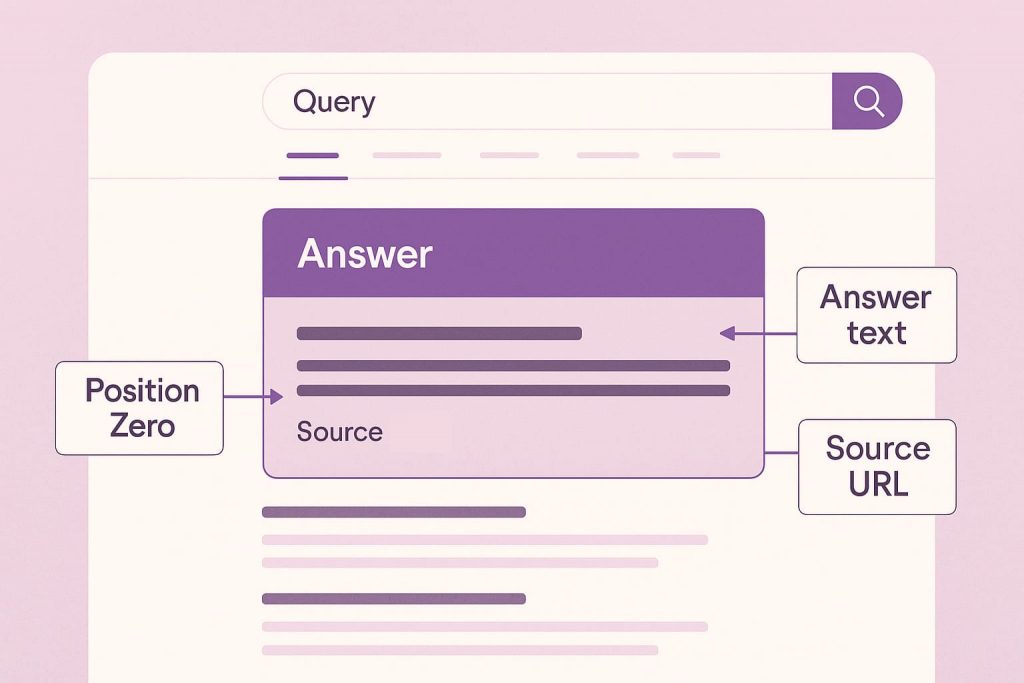
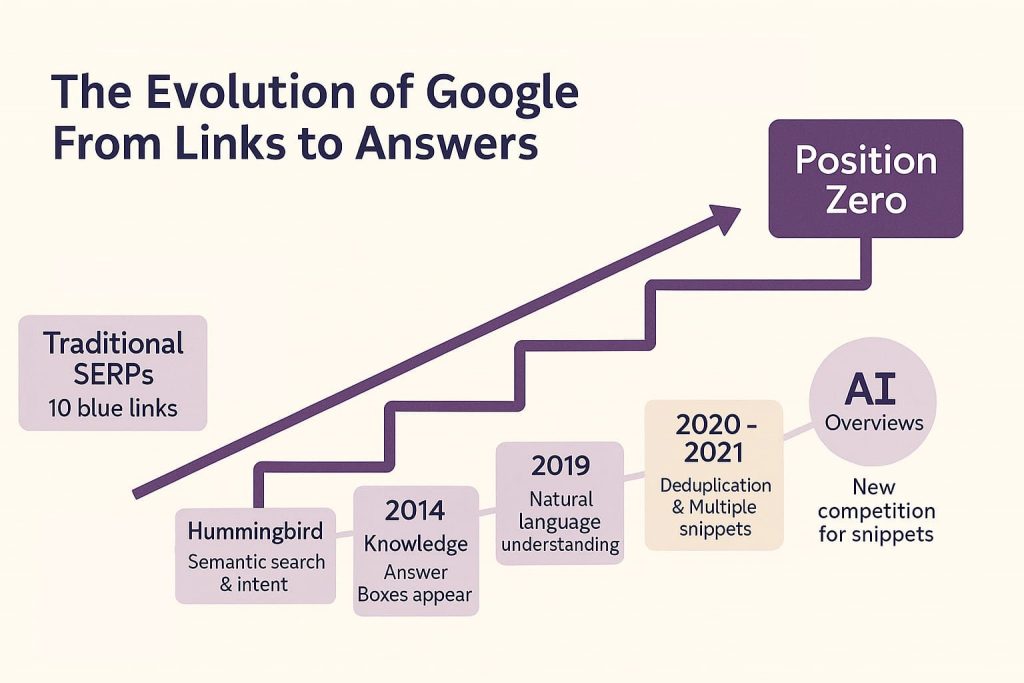
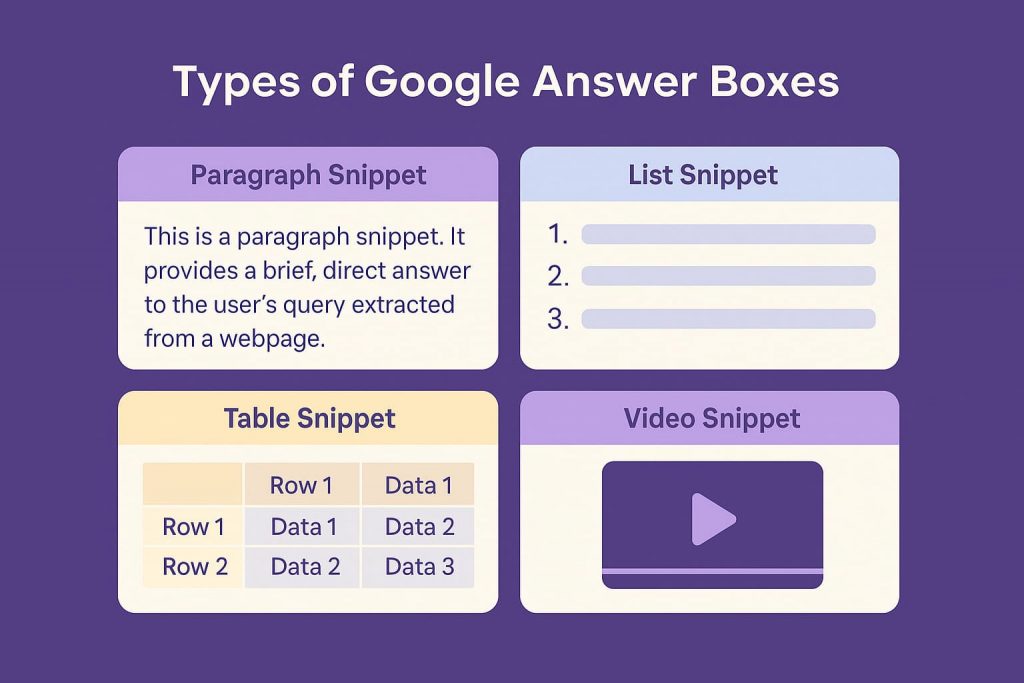
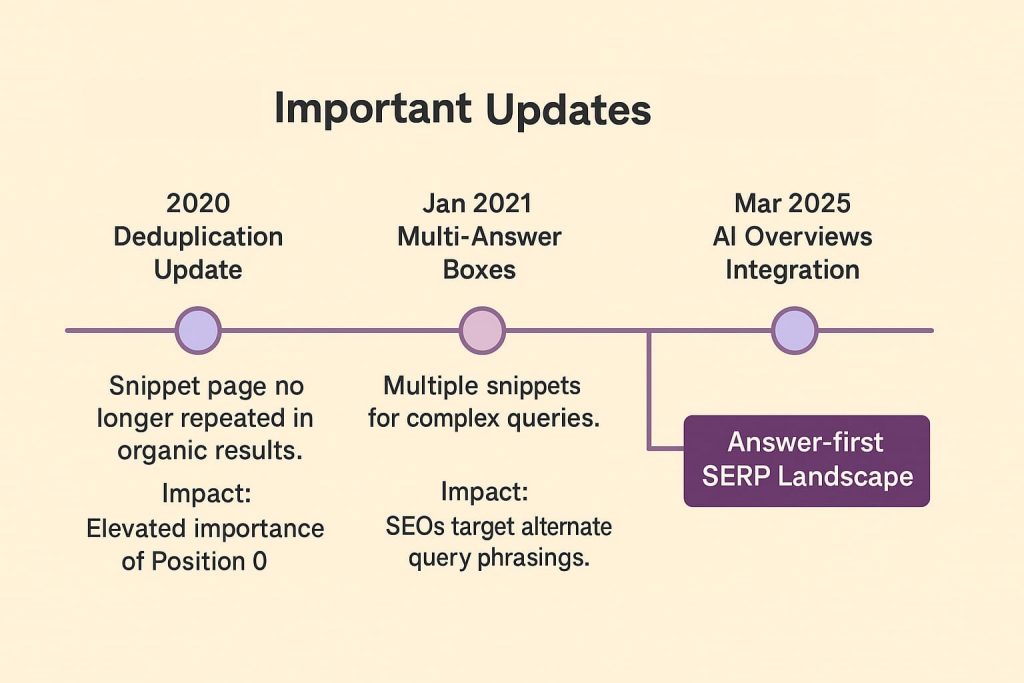
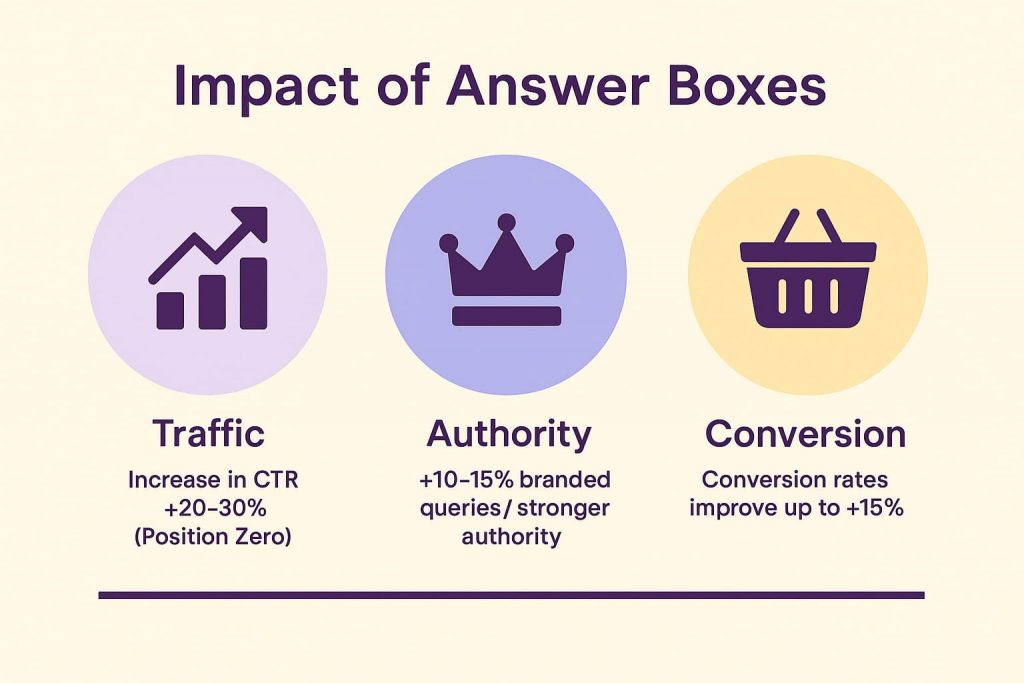
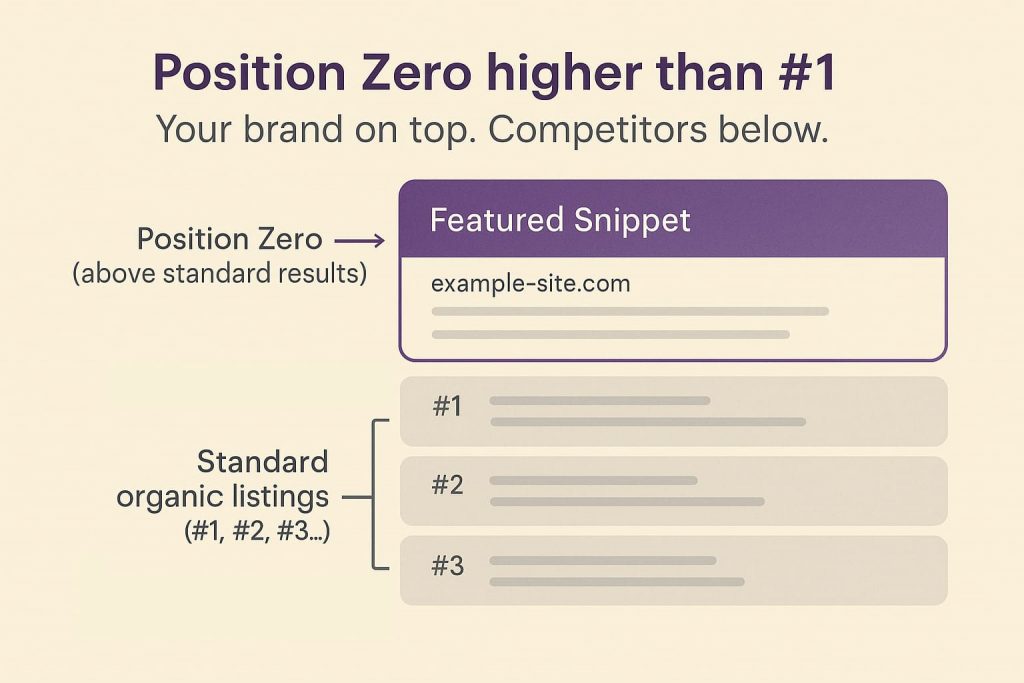
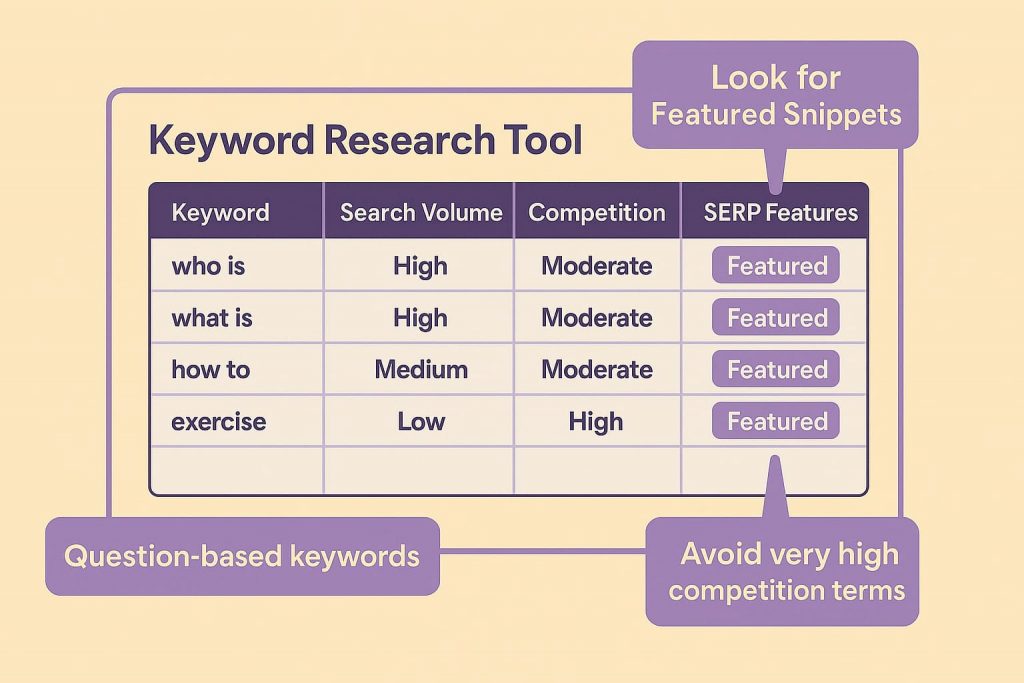
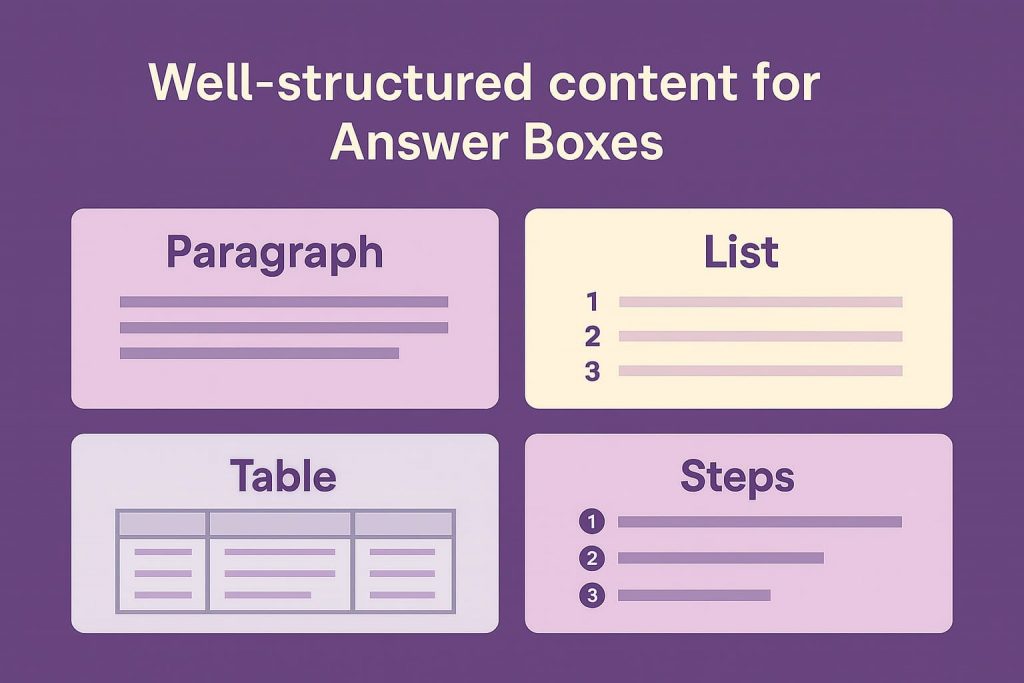
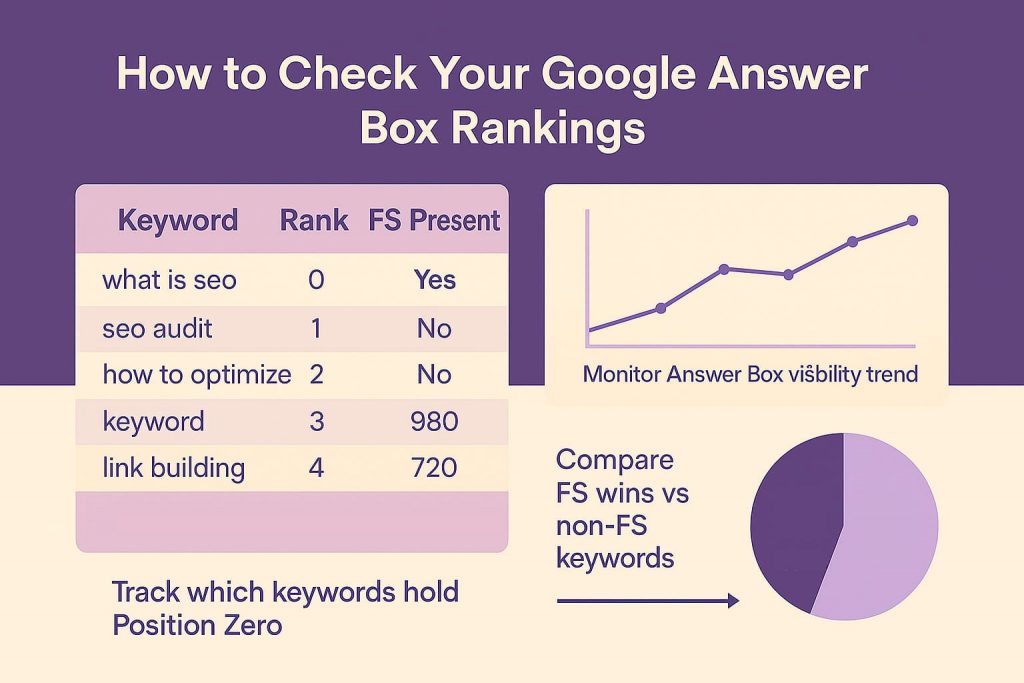
 Share
Share
 X
X
 LinkedIn
LinkedIn










